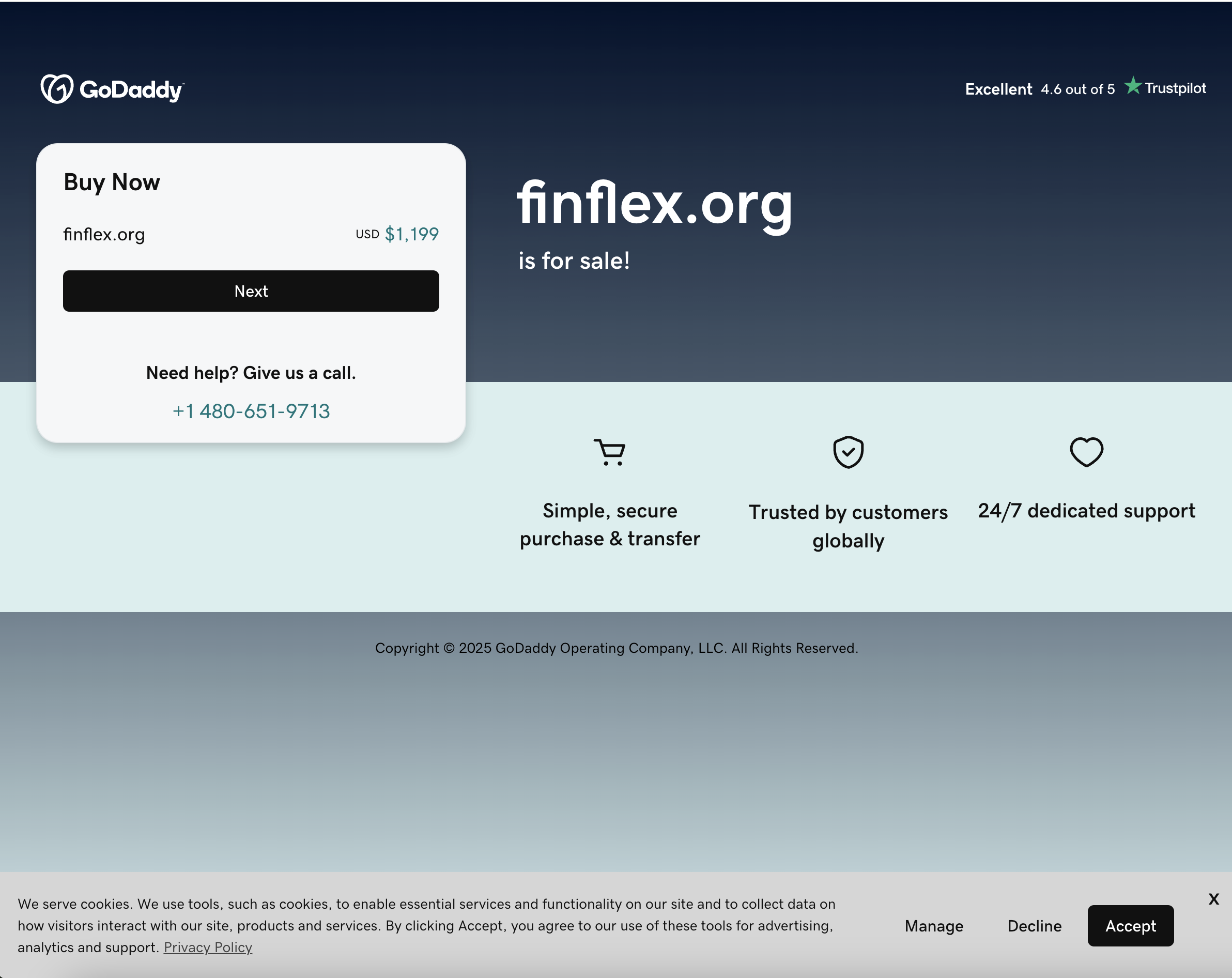Finflex.org Scam Review – Avoid This Fake Trading Platform
Finflex.org claims to offer expert financial solutions, access to forex, cryptocurrencies, commodities, and other markets. The website is sleek, the promises are big, and the marketing language is filled with buzzwords like “AI trading,” “secure investment,” and “instant returns.” But these are often signs of a scam trying to look credible.
This post dives deep into the tactics used by Finflex.org to deceive users, warning signs to watch for, and why this platform should be avoided at all costs.
What Finflex.org Claims to Offer
Finflex.org promotes itself as a modern trading and investment company providing tools and guidance for users at all experience levels. Here’s a sample of what the platform claims:
-
Cutting-edge trading algorithms powered by AI
-
Secure and encrypted client funds
-
High-yield investment opportunities
-
24/7 customer support and personal account managers
-
Easy withdrawals and low entry thresholds
At first glance, this may sound like a dream platform for someone interested in growing their wealth. But in reality, these are the same features used by scam platforms to attract victims.
Red Flag #1: No Regulatory Oversight
A fundamental requirement for any platform handling investor money is regulation. Regulatory bodies such as:
-
The Financial Conduct Authority (FCA) in the UK
-
The U.S. Securities and Exchange Commission (SEC)
-
The Cyprus Securities and Exchange Commission (CySEC)
-
The Australian Securities and Investments Commission (ASIC)
…ensure that trading platforms meet strict legal and operational standards, which include protecting customer funds and operating transparently.
Finflex.org offers no legitimate regulatory credentials. While it may claim to be licensed or show logos of financial authorities on its website, a simple verification through those agencies reveals no trace of such a company being officially registered. This lack of regulation means your money is not protected by law, and there is no authority to turn to if something goes wrong.
Red Flag #2: Promises of High Returns with Low Risk
Another major warning sign is Finflex.org’s guarantee of high profits with little or no risk. The site boasts claims like:
-
“Earn up to 30% per week!”
-
“Low-risk investments with guaranteed returns”
-
“Withdraw your profits any time – instantly!”
These promises sound too good to be true because they are. No legitimate investment platform can guarantee returns. Financial markets are volatile and unpredictable. Even the most seasoned investors accept the possibility of losses.
By promising fast, guaranteed returns, Finflex.org is not offering investment—it’s selling a fantasy designed to bait users into depositing money quickly.
Red Flag #3: Aggressive and Manipulative Account Managers
Once you register on Finflex.org, it’s highly likely you’ll be contacted by someone posing as an “account manager” or “investment advisor.” They usually call or email you persistently, pressuring you to deposit funds quickly by saying:
-
“We’re about to close this limited opportunity.”
-
“This is the best time to enter the market.”
-
“You’ll miss out if you don’t act now.”
They may seem helpful at first, but their only goal is to get you to deposit money—and then more, and more. These scammers are trained in manipulation. They build fake relationships, pretend to care about your success, and use flattery or urgency to control your decisions.
When you finally resist or question them, the friendliness disappears, and so does the support.
Red Flag #4: Withdrawal Issues and Fake Fees
One of the most distressing parts of the Finflex.org scam is what happens when you try to withdraw your money. In the early stages, small withdrawal requests might go through to build your trust. But once you try to access a large amount or your total balance, everything changes.
Users often encounter:
-
Delays due to “technical errors”
-
Sudden demands for withdrawal fees
-
Requests for “tax payments” before releasing funds
-
Account lockouts for so-called “security verification”
Each of these is an excuse to get more money out of you or stall until the platform disappears entirely. Many victims have deposited more money just to fulfill these fake requirements, only to never see a single cent returned.
Red Flag #5: Fake Trading Activity
To make users believe their money is working and growing, Finflex.org features a dashboard with market data, trading charts, account growth, and even live trade updates. But these are simulated visuals, not actual market interactions.
This fake interface is designed to:
-
Show your money increasing on-screen
-
Display profitable trades and balances
-
Convince you that the system works
But behind the scenes, no real trading is taking place. Your funds are never entering the market—they are being diverted directly to the scammers’ wallets.
Red Flag #6: Fabricated Testimonials and Reviews
Finflex.org showcases glowing testimonials on its site, allegedly from satisfied users who have made huge profits. These are usually accompanied by professional-looking photos and first names.
But these reviews are:
-
Fake – Often generated with stock photos and AI-written praise
-
Unverifiable – The users don’t exist and cannot be found elsewhere online
-
Too Perfect – Real users speak with nuance, not generic excitement
Real victims, meanwhile, often share horror stories of loss, manipulation, and ghosted support teams. But these don’t appear anywhere on Finflex.org—for obvious reasons.
Red Flag #7: No Verifiable Company Information
Another massive red flag is Finflex.org’s lack of transparency. Legitimate businesses provide:
-
A real office address
-
A registered company number
-
Contact details including phone and email
-
Names of directors or executives
-
Clearly written terms and policies
Finflex.org fails on every count. The “contact us” page often leads to a generic email form or an international number that either doesn’t work or routes you to a fake customer service agent. There’s no way to track or verify who is behind the platform.
This level of anonymity is intentional. It protects the scammers and makes it almost impossible for victims to hold them accountable.
The Typical Finflex.org Scam Flow
Here’s how most users get scammed:
-
Sign-up and deposit: Lured by high returns and smooth talk from a representative.
-
Fake profits shown: Your account shows growth, convincing you to invest more.
-
Withdrawal denied: When you try to cash out, problems begin.
-
Fee demands: You’re told to pay taxes, verification fees, or legal charges.
-
Silence or account freeze: Once they’ve extracted enough, they disappear—or lock your account entirely.
At every step, they use professional tricks, scripted excuses, and fake systems to prolong the scam and drain as much money as possible.
Conclusion: Finflex.org Is Not a Real Investment Platform
After analyzing Finflex.org from top to bottom, the conclusion is unavoidable: Finflex.org is a scam. It operates without regulation, relies on manipulation, blocks user withdrawals, and hides behind fake identities.
No responsible investor should place money on this platform. And no beginner should be tricked into thinking it’s a safe entry into the financial world.
Everything about it is engineered for deception:
-
The fake dashboard
-
The fake reviews
-
The fake advisors
-
The fake fees
If you’ve come across this platform, do not engage, and if you’re already involved, stop all deposits immediately.
Report Finflex.org and Recover Your Funds
If you have fallen victim to Finflex.org and lost money, it is crucial to take immediate action. We recommend Report the scam to BOREOAKLTD.COM , a reputable platform dedicated to assisting victims in recovering their stolen funds. The sooner you act, the greater your chances of reclaiming your money and holding these fraudsters accountable.
Scam brokers like Finflex.org persistently target unsuspecting investors. To safeguard yourself and others from financial fraud, stay informed, avoid unregulated platforms, and report scams to protect. Your vigilance can make a difference in the fight against financial deception.





